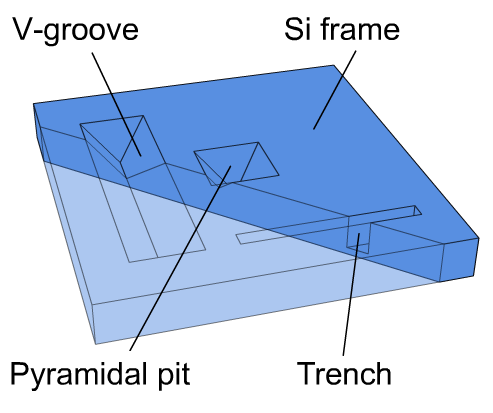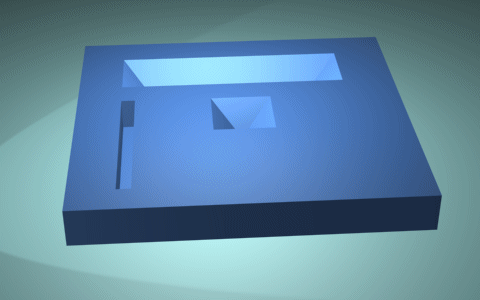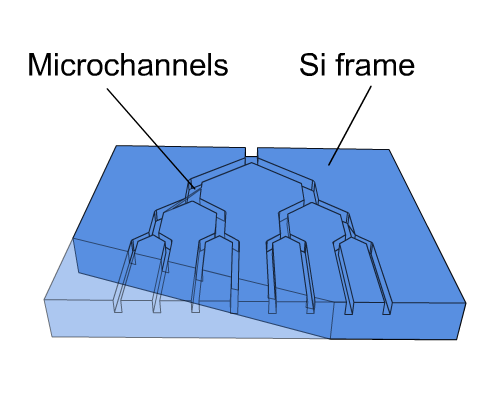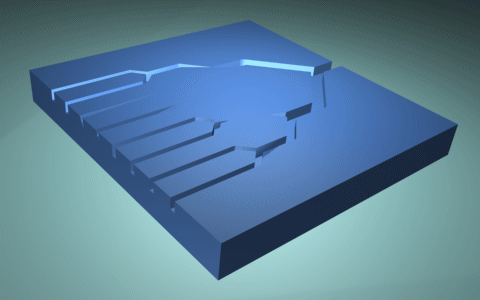
4 3D structures
4.1 Trench, cavity, microchannel
Trenches, cavities
As a consequence of etching anisotropy, it is possible to develop unique structures not otherwise feasible. For example, a <100>-oriented silicon wafer with an etched hole in a layer of silicon dioxide that covers the surface exposed to an anisotropic etchant (like KOH) will create a truncated pyramidal shaped pit bounded by <111> planes. Exploiting the orientation dependence of etch rate, it is possible to fabricate shapes like V-groves with uniform walls defined by the <111> planes. Similar very deep, narrow structures with uniform vertical sidewalls are possible, if the orientation of the wafer surface is <110>.
Trenches, cavities
 |
 |
Microchannel
Silicon is often used as a material for microfluidic devices, due to its unique properties such as chemical and high temperature resistance, good thermal conductivity, and its potentialities for high-precision structuring. Deep reactive ion etching (DRIE) is the most versatile process for the structuring of silicon. High aspect ratios as well as multi etch step from both sides of the wafer are features that enable complex 3D structures. Deep trenches and pits, up to ten or a few tens of microns, of arbitrary shape and with vertical walls, can be etched in a variety of materials including silicon, oxide and nitride. The movie shows the channel system of a micro mixer.
Trenches, cavities
 |
 |
| Previous (Chapter 3.) | Next |
